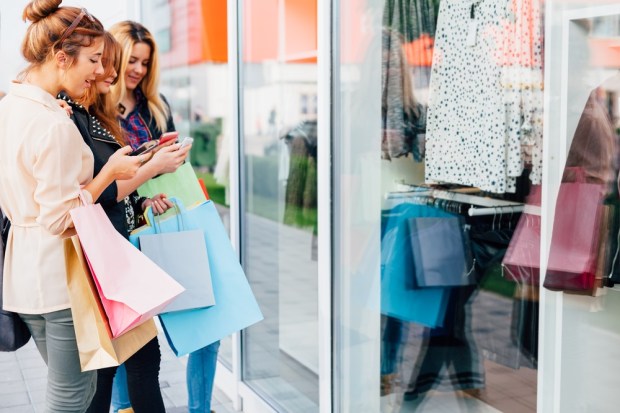Designers Behind Fitbit Are Trying To Curb Impulse Shopping

Impulse shopping is a fact of life for countless people around the world, and while the retailers never want you to reign in that bad behavior, one company is aiming to help people around the globe.
NewDealDesign, the company behind the design for the Fitbit wearable fitness trackers, has created a new device, dubbed Scrip, which mimics the experience of paying with cash, thus lowering impulse shopping, which often happens when someone whips out a credit card. Research has shown repeatedly that people are less inclined to drop money on an impulse buy if they are paying with cash.
According to a report, Scrip, which is in the concept stage, uses near-field communication, like Apple Pay, and is linked to a customer’s bank account. To make a payment, the customer swipes his or her thumb over the device in a manner that is reminiscent of counting bills. The device will show the account’s updated balance as if the person was handing over cash.
Scrip “brings physicality back to money by replicating the positives of a cash transaction, such as the flipping and selecting of notes,” said Gadi Amit, founder of NewDealDesign, in the report. Amit came up with the idea behind Scrip when he saw his teenage daughters were often out of funds, which wasn’t a problem when they were younger and paid cash for the things they purchased.
“Spending cash is actually painful to people,” said Jaeha Yoo, director of experience design at NewDealDesign. “It literally triggers pain receptors — the act of moving these physical things from one side to the other triggers this loss aversion.”
Impulse spending, not surprisingly, is a real problem, particularly in America. A recent survey from CreditCards.com found that five out of six American consumers admitted to making an impulse buy at some point in their lives. And when these customers are shopping impulsively, they are most often doing it in person and spending on themselves. According to the survey, 54 percent of U.S. consumers say they’ve spent $100 or more on an impulse buy, while 20 percent admitted they’ve spent at least $1,000 or more on an impulse buy.
